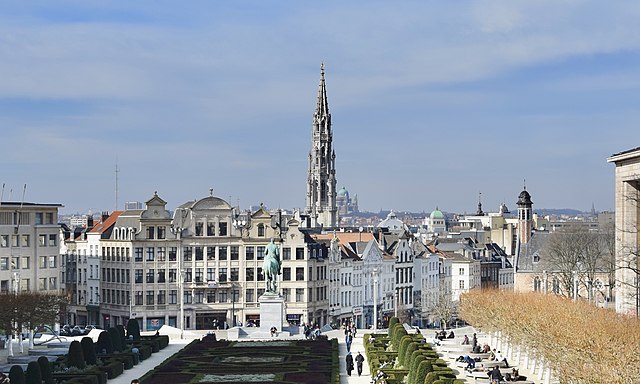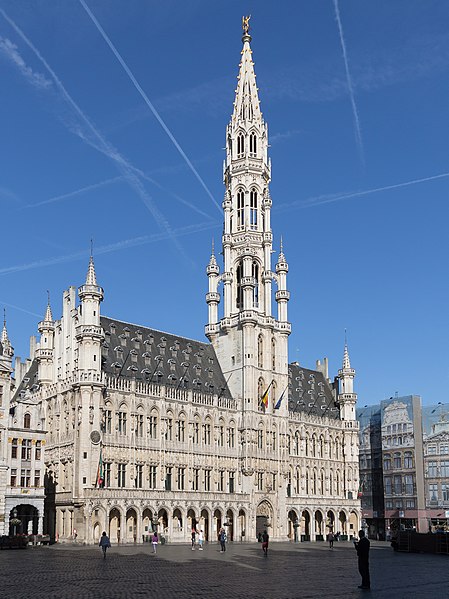In Brussels, as in most European cities, one needed the capacity of bourgeois in order to not only exercise political rights, but also to practice a trade, which, in Brussels, meant to be a member of the Guilds or of the Seven Noble Houses. The charter of Brussels, as codified in 1570 in articles 206 and following, provided the conditions of admission to the bourgeoisie of the city. The Bourgeois were the patrician class of the city. This social class was abolished by Napoleon during the French occupation.
Saint Michael, secular emblem of Brussels.
Charles Picqué, a Belgian politician and former Minister-President of the Brussels Capital-Region, is a member of a Bourgeois family of the city.
Joseph Poelaert (1817–1879), a Belgian architect who designed the Law Courts of Brussels, is a member of a Bourgeois family of the city.
The City of Brussels is the largest municipality and historical centre of the Brussels-Capital Region, as well as the capital of the Flemish Region and Belgium. The City of Brussels is also the administrative centre of the European Union, as it hosts a number of principal EU institutions in its European Quarter.
Panorama of the city centre from the Mont des Arts/Kunstberg
Engraving of Brussels from c. 1610
Manneken Pis
Brussels' Town Hall







